By CHRIS McGOWAN
By CHRIS McGOWAN
South Korea has launched popular movies in various genres in recent years, such as Bong Joon-ho’s sci-fi/action films Snowpiercer and Okja plus the zombie flick Train to Busan and #Alive. And this year Netflix released Space Sweepers, South Korea’s first high-production sci-fi movie set in space, which features riveting action, compelling characters, a skilled balancing of humor with drama, and some 2,000 VFX shots. Space Sweepers (original title: Seungriho) even has the harpoon-tossing, wisecracking Bubs – Korea’s first voice-acted robot character constructed through motion capture.
Six Korean VFX studios helped bring Space Sweepers to life: Dexter Studios, WYSIWYG Studios, M83 Studio, Madman Post, Digital Idea and LIX Studio. “We looked at their human resource infrastructures, and the VFX elements per sequence that best suited each company were distributed accordingly. Other firms in Asia and the Americas also contributed,” says Visual Effects Supervisor Jeong Seong-jin, who worked with Visual Effects Supervisor Jeong Cheol-min.


Produced by Bidangil Pictures, Space Sweepers is set in the year 2092. The Earth has become almost uninhabitable (shown in an orange-hued Blade Runner-esque opening), and the wealthy live in an idyllic green colony high in orbit, established by the UTS Corporation. For director Jo Sung-hee (A Werewolf Boy, Phantom Detective), the movie shows a “social class divide between Earth and space” and “between those two classes are the main characters.” Also circling the globe are countless bits and pieces of satellites, wrecked vessels and assorted debris. UTS allows non-citizens from Earth to work as scavengers there, and they eke out a hazardous living by capturing and selling orbiting junk.
The rundown but swift Victory is one such vessel chasing after whatever looks sellable. Its motley yet charismatic crew, all of them mired in fines and debt, consists of Tae-Ho (a brilliant young space pilot), Captain Jang (a mysterious former special forces officer), Tiger Park (a former drug baron who repairs the ship and boosts its performance), and Bubs, a reprogrammed military robot who is highly emotional, complains a lot and has unusual aspirations.
Space Sweepers establishes its VFX credentials early on in dizzying scenes where the Victory successfully races and out-maneuvers other junk collectors to capture a crashed shuttle. “It’s the scene where the Victory makes an entrance in the film,” comments Cheol-min. “The spaceships compete fiercely with one another, using harpoons to secure space debris traveling at several thousand kilometers per hour. We tried to make those scenes unique, something never seen before in other films.”
“We tried hard to emphasize a sense of speed, more than in any other sci-fi film,” explains Seong-jin. “Of course, using previsualization animation before designing the sequences helps a great deal, but obviously there’s not enough time to edit everything into the highest quality level. We used game engines to preview how fast spaceships can move, and the visual imaging greatly helped with our simulation efforts. Ultimately, the hardest thing was the expression of spacecraft movement at extremely fast speeds. Because outer space is so vast, there are no objects in close proximity. No matter how fast we make the animation, without objects in the background that serve as reference points, speed cannot be perceived.”
“It’s the scene where the Victory makes an entrance in the film. The spaceships compete fiercely with one another, using harpoons to secure space debris traveling at several thousand kilometers per hour. We tried to make those scenes unique, something never seen before in other films.”
—Jeong Cheol-min, Visual Effects Supervisor

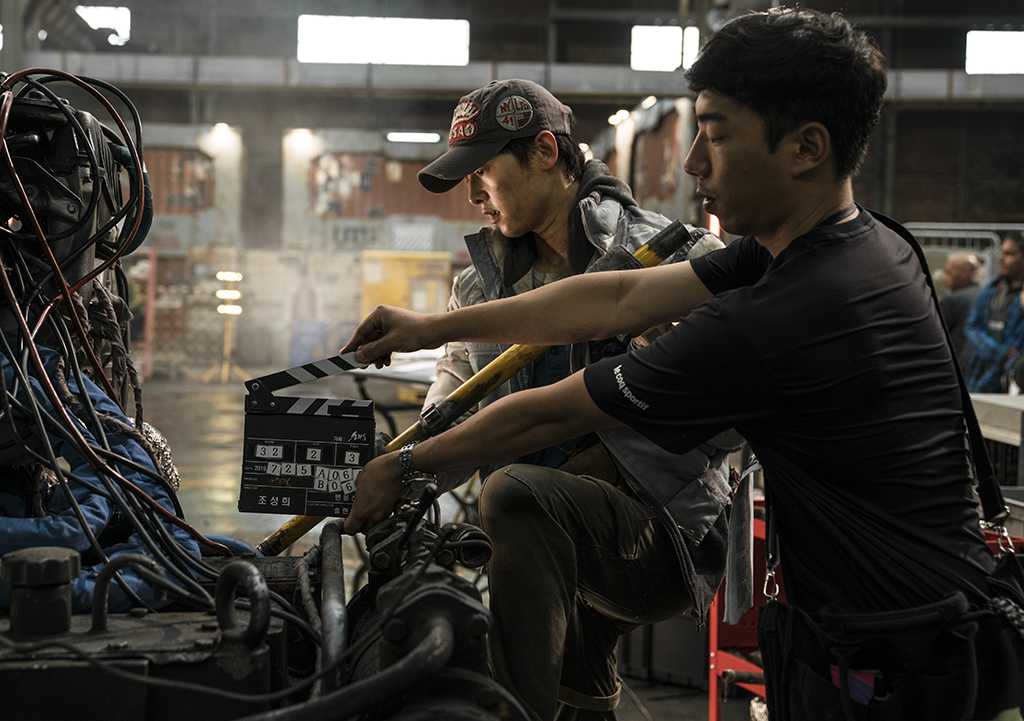
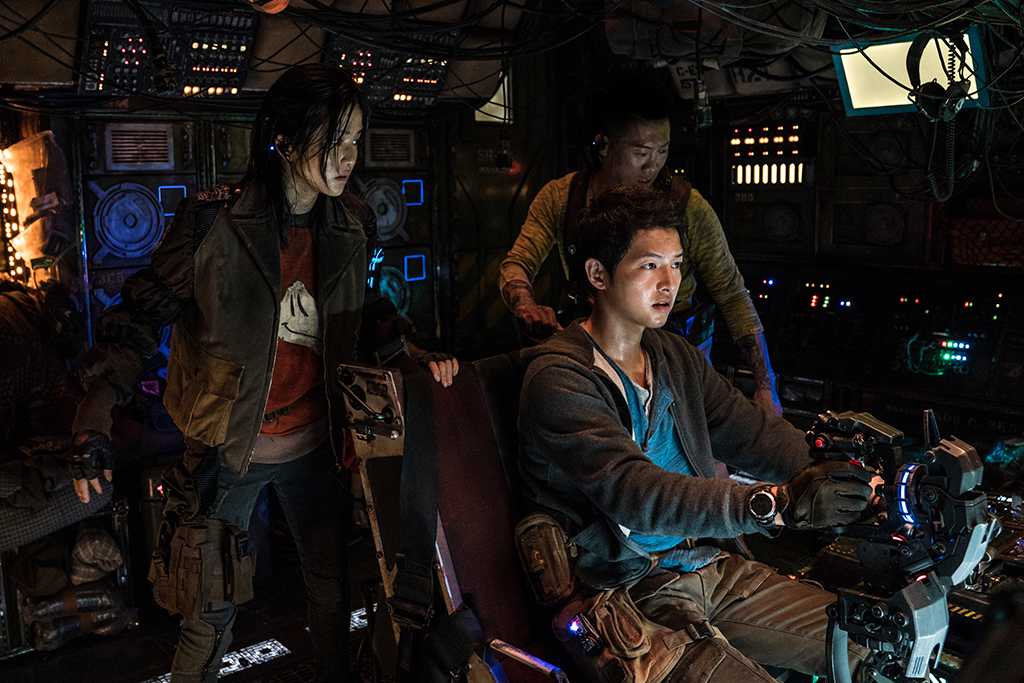
Once the Victory has the shuttle safely in hand, they discover a stowaway aboard – Dorothy, an adorable little girl that UTS claims is actually an android with a miniature H-bomb inside. She is worth a great deal of money both to the UTS and the Black Fox terrorist group. At first, the Victory crew is eager to turn her in for a huge reward that would alleviate their poverty, but complications – and changes of heart – arise. Tae-ho and Tiger Park plan to hand Dorothy to the UTS in a gigantic orbiting structure called the 32nd Commercial District, but a chaotic firefight ensues. About such action scenes in the film, Seong-jin notes, “Action that takes place in outer space also exists to support the drama. It is important to have cool, fancy scenes but, fundamentally, we wanted to focus on the distinctive characters like Tae-ho and Captain Jang and their interconnected relationships. We tried to really express the hidden stories behind each character, to give the audiences emotionally moving experiences. So, the action scenes were built up from the foundation of the storyline, bringing action and drama elements together in harmony.”

“We tried hard to emphasize a sense of speed, more than in any other sci-fi film. Of course, using previsualization animation before designing the sequences helps a great deal, but obviously there’s not enough time to edit everything into the highest quality level. We used game engines to preview how fast spaceships can move, and the visual imaging greatly helped with our simulation efforts. Ultimately, the hardest thing was the expression of spacecraft movement at extremely fast speeds.”
—Jeong Seong-jin, Visual Effects Supervisor

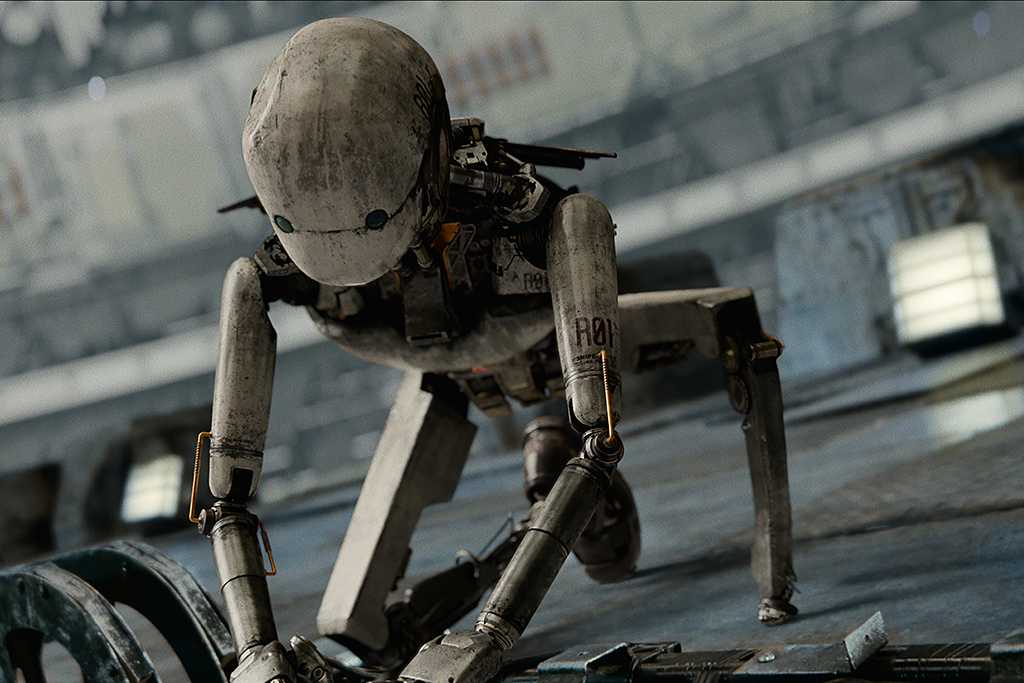
“Instead of something streamlined, we looked at big tow trucks, wreckers and cranes [for the design of spacecraft]. The space debris cleaning ships are put together with outdated parts. They’re far from being anything futuristic. … Some ships even have plates like license plates on cars. This type of an image contrasts with the state-of-the-art spacecrafts operated by UTS. The idea is that although the Victory consists of salvaged parts, it’s finely tuned up to become a powerful spaceship. Its overall rustic design makes it unique, differentiating it from similar spacecraft in other Hollywood films.”
—Jeong Seong-jin, Visual Effects Supervisor


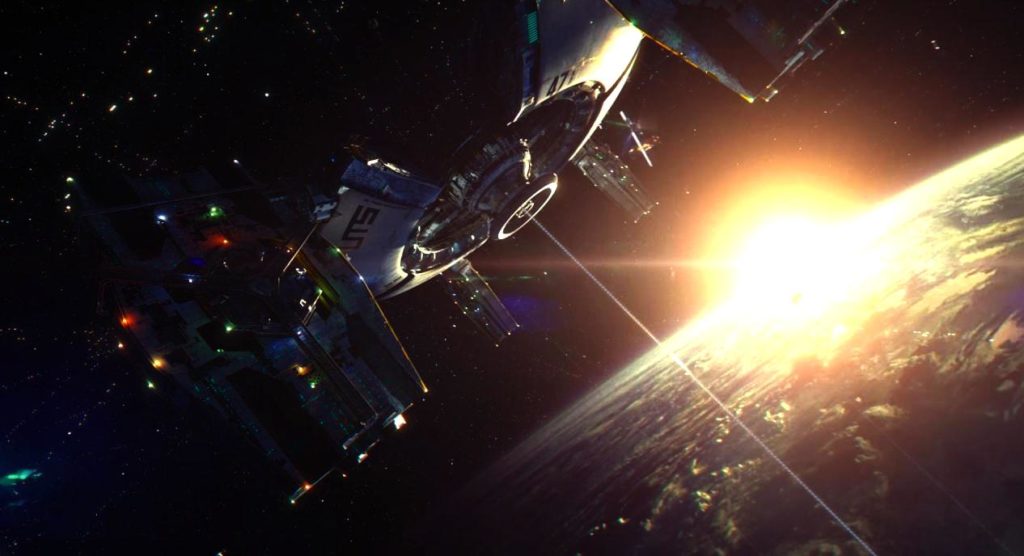


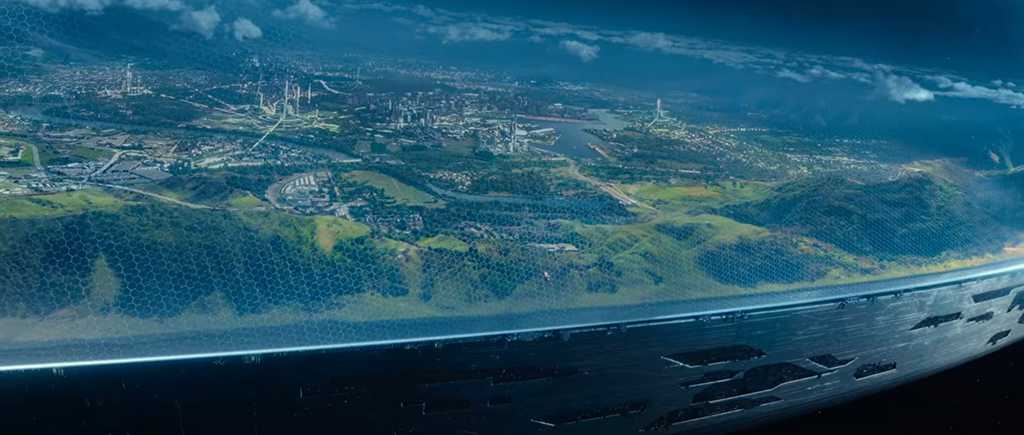
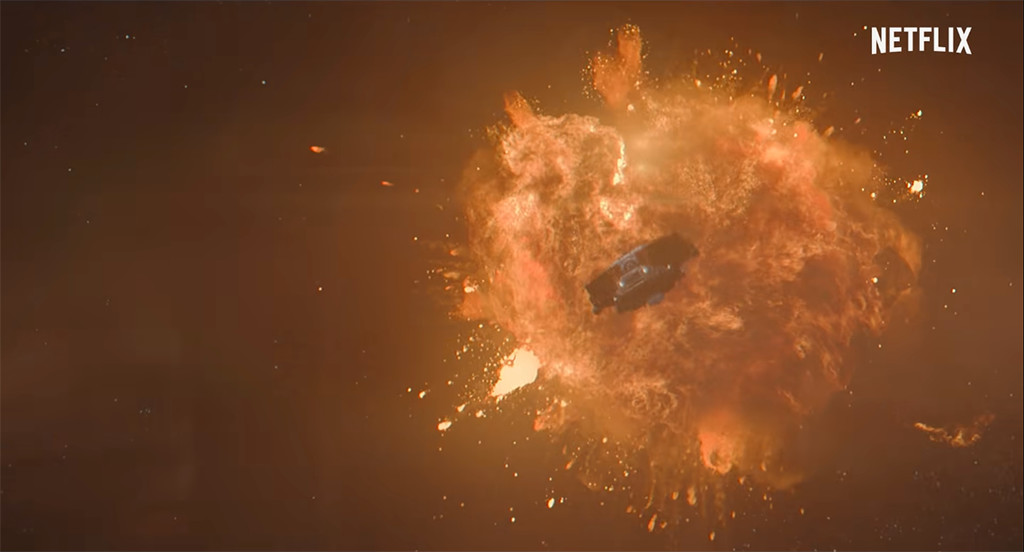
The main characters in Space Sweepers are all too human, not a glamorous group of heroes. Sung-hee adds that he worked hard to create a film where the crew would come across to audiences as ordinary, struggling Koreans, rather than cartoon characters or superhuman beings. Ensuring the characters fit naturally into their world “was the biggest focus” for him. Adding lots of sweat, dust and grime to the characters, who wore worn-out outfits, increased their authenticity. At one point Tae-Ho pays a debt with his only shoes and he then pilots the ship in thread-worn socks.
To further emphasize the crew’s struggles, the director came up with the idea of their flinging harpoons used by whale ships. “With different bounty-hunting parties going after the same trash, harpooning allows for quick targeting and picking up, adding a fun element to the story,” comments Seong-jin. “This premise adopts a low-tech method, where one crew member [the robot Bubs] must step outside, leap around and actually throw a harpoon to capture the target debris.”
Cheol-min explains, “We designed the robot first, followed by the helmet and the other specialized parts for the chest and the shoulders.” Actor Yoo Hai-jin voiced the robot. “For Yoo Hai-jin to act out the parts realistically, we put [him] in a motion capture suit first. Then he wore a gray suit with markers followed by an outfit and accessories that characterized Bubs in the film.
“Before filming on set,” Cheol-min continues, “the movements had to be recorded with a person wearing the motion capture suit to establish a baseline. Walking to the left, walking to the right, moving the arms and all other basic movements were recorded. Filming could begin only after these movements were recorded and synchronized with the program. Yoo Hai-jin performed all these movements himself, as well as floating through space and throwing the harpoon standing outside the spaceship.
“After that,” he adds, “animators worked on the animations using the motion capture data. They compared the scenes performed by Yoo Hai-jin with the scenes without him. For the movements that were not expressed well enough through motion capture, such as a lift of a finger or a tilt of a head, animators enhanced the details based on the actor’s movements.”
Observes Cheol-min, “I thought Bubs was a special character when I first read the script. I was concerned about making him as natural as the other characters. I feel good about how Bubs turned out in the end, a character who doesn’t stand out and blends well into the group.”
For the spacecraft, tow-truck-type designs were considered, says Seong-jin. “Instead of something streamlined, we looked at big tow trucks, wreckers and cranes. The space debris cleaning ships are put together with outdated parts. They’re far from being anything futuristic, and the process of tweaking them piecemeal creates an imbalanced, unsophisticated effect. There are humble pictures drawn on the exteriors. Some ships even have plates like license plates on cars. This type of an image contrasts with the state-of-the-art spacecrafts operated by UTS. The idea is that although the Victory consists of salvaged parts, it’s finely tuned up to become a powerful spaceship. Its overall rustic design makes it unique, differentiating it from similar spacecraft in other Hollywood films.”
“With different bounty-hunting parties going after the same trash, harpooning allows for quick targeting and picking up, adding a fun element to the story. This premise adopts a low-tech method, where one crew member [the robot Bubs] must step outside, leap around and actually throw a harpoon to capture the target debris.”
—Jeong Seong-jin, Visual Effects Supervisor
Another challenge was to achieve striking visual effects with the sunlight in space. “Since none of us have been to outer space, we spent much time in the beginning discussing ways to express it with the directors of photography and lighting,” explains Cheol-min. “In space documentaries, we see hard, contrasting lighting in the absence of [Earth’s] atmosphere – more intense than what we imagine it to be. One bold decision we made was to generate that hardness of the light from one direction instead of many. For example, we have scenes with intense sunlight pouring in when the spacecraft is moving toward the direction of the sun. Some of these ideas are not so intuitive, and the filming and lighting directors had quite a lot to worry about. At times, we tried to show them our post-production edits on a scene before finalizing it.”
In terms of decisions involving the cast. Cheol-min notes, “We discussed ways of depicting realistic, everyday life. Because CG takes up such a large portion of the work, we focused on going more in-depth with a limited number of sets. We produced sets requiring human interaction and the rest were done with CG. The production crews made the sets very realistic, which made our work easier.”
Asked about the state of the VFX industry in Korea now, Seong-jin replies, “Korea’s technology is already top-notch. Perhaps you’re asking about how it compares with Hollywood’s, and I’d say there are no big differences. The software and hardware technologies are the same. However, there may be differences in the experience and the know-how of the workers. I think experience is important and working on more projects should help build it.”